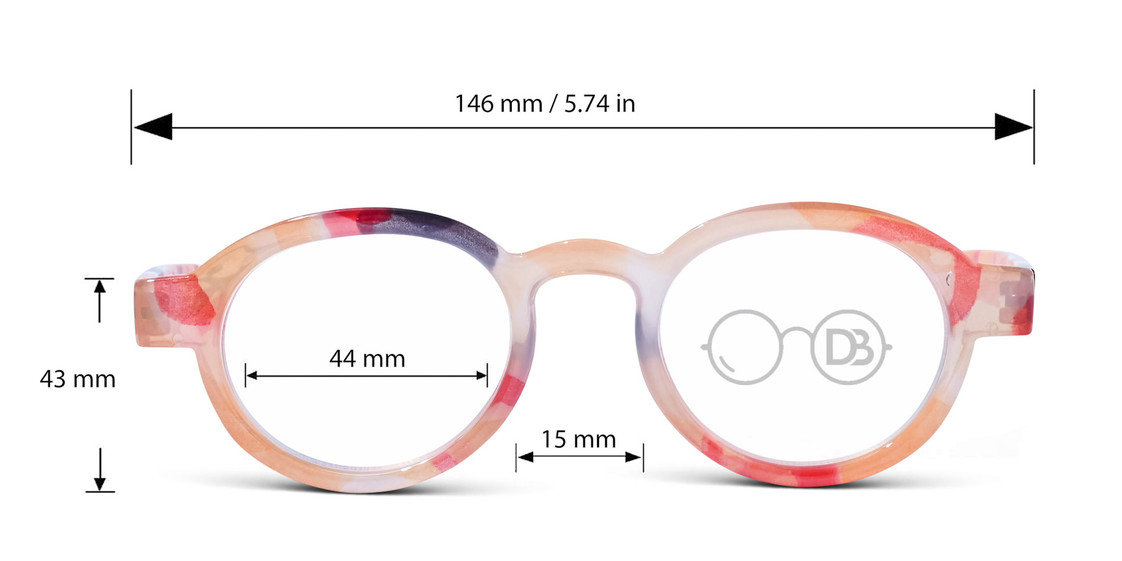
Glasses Measurements: A Guide to Finding Your Perfect Fit
Posted by Debby Burk on 14th Apr 2024
Glasses Measurements: A Guide to Finding Your Perfect Fit
When exploring the world of eyewear, understanding the nuances of glasses measurements is crucial. These measurements ensure a comfortable fit, optimal vision correction, and can enhance one's personal style.
Glasses come in a variety of sizes and shapes. The right measurements can make all the difference in how they look and feel.
Knowing how to measure your glasses can save time, provide a starting point for shopping for new frames, and help in communicating with eyecare professionals.
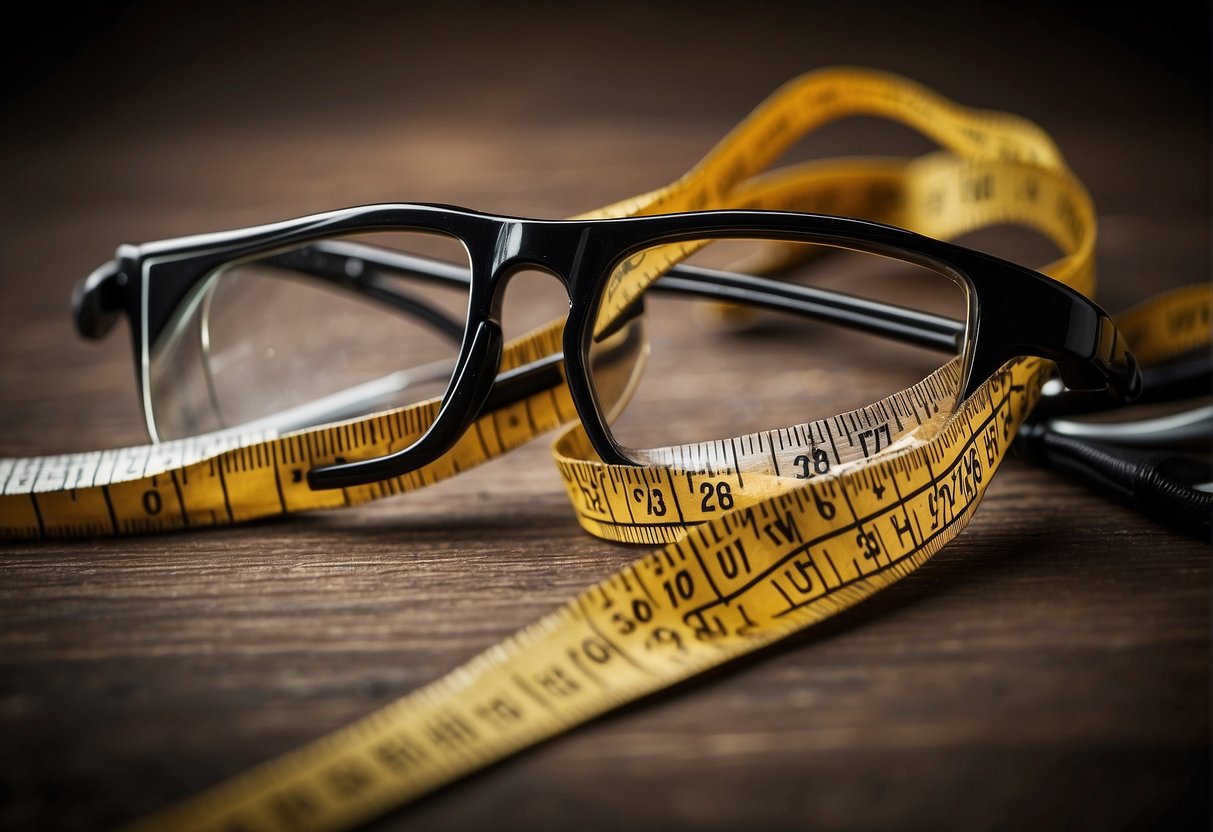
Selecting the correct frame size is not only a matter of aesthetics, but also one of comfort and functionality.
Frame dimensions are typically printed on the inside of the temple arm and include the lens width, bridge width, and temple length.
However, these numbers are just the beginning. The types of lenses and their measurements can further tailor the glasses to your individual needs.
Meanwhile, the choice of lens materials and coatings can affect the thickness and weight of the glasses.
Key Takeaways
- Proper measurements enhance comfort and functionality of eyewear.
- Correct frame size is determined by lens width, bridge width, and temple length.
- Lens types and materials impact the final measurements and feel of glasses.
Understanding Glasses Measurements
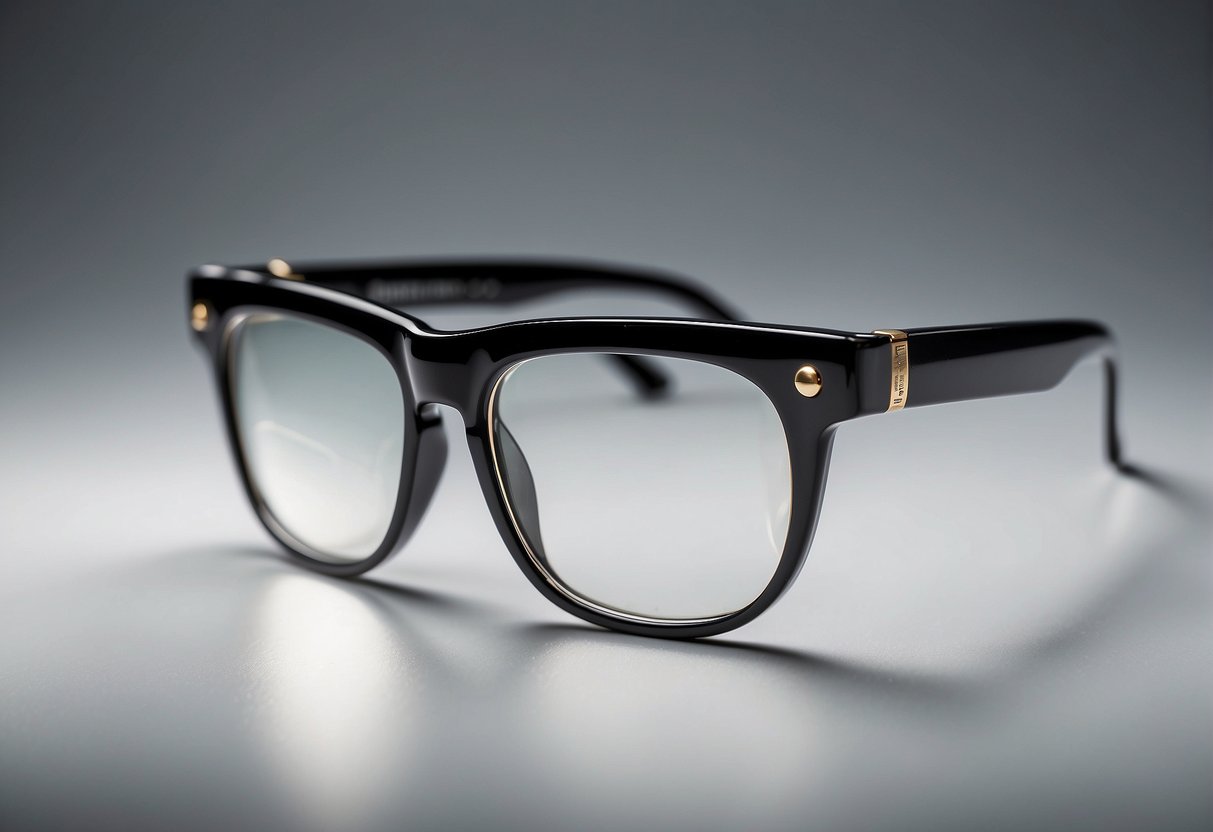
When selecting glasses, it's crucial to understand their measurements, as these affect how the frames fit on your face.
We'll examine the core components of eyeglass frames and the importance of ensuring frame size compatibility.
Components of Eyeglass Frames
Eyeglass frames comprise several key measurements that we must consider:
- Eye Size (Lens Width): Typically ranging from 40 to 62 millimeters, this is the horizontal width of one lens at its widest point.
- Bridge Width: The measurement over the nose between the lenses. It influences the fit on the nose and ranges from 14 to 24 millimeters.
- Temple Length: The arms of the frames that extend over the ears. Sizes can vary from 120 to 150 millimeters.
- Frame Width: The total horizontal front measurement of the frame and is not explicitly labeled on the glasses.
- Lens Height: This is significant for bifocals or progressive lenses to ensure proper vision alignment and is the vertical height of the lens.
What Do The Numbers On My Glasses Mean?
When we select eyeglasses, understanding the numbers imprinted on the inside of the frame arms or the bridge is crucial. These numbers provide specific measurements that are key to a comfortable and correct fit. For clarity, let's consider an example frame measurement expressed as follows: 50-20-140, where 50 is the lens width, 20 is the bridge width, and 140 is the temple length, all in millimeters.

Typically, you will find three numbers on your glasses, which might look like this: 50-20-140.
- 50 represents the lens width, measured in millimeters. This is the horizontal diameter of one lens.
- 20 signifies the bridge width, which is the gap above your nose. A proper bridge width ensures the glasses rest comfortably without pinching.
- 140 denotes the length of the temples (arm pieces) in millimeters. This measurement affects how well the glasses fit around your ears.
Here's a quick guide to these sizing numerals:
| Measurement | Where to Find | Purpose |
|---|---|---|
| Lens Width | First Number | Width of one lens |
| Bridge Width | Second Number | Gap for the nose |
| Temple Length | Third Number | Length of the arm pieces |
These measurements are paramount for the fit of the frame against your face.
Lens width determines how the glasses look and fit on your face. Meanwhile, the bridge width impacts where the frames sit on your nose. Lastly, the temple length is important to ensure the glasses don't slip off.
If your latest frame seems off, check these numbers against your previous pair to identify what's changed. Remember, precision in these measurements ensures optimal comfort and effectiveness of your eyewear.
Importance of Frame Size Compatibility
The sizing of frames impacts not only the comfort and aesthetics of glasses but also their function:
- Lens Width and Frame Width: A correct lens width ensures that each eye is centered in the lens for optimal vision. The overall frame width should correspond with the width of your face to secure a proper fit without excessive pressure or slippage.
- Bridge Fit: If the bridge is too tight, it can cause discomfort; if it's too wide, the glasses may slide down.
- Temple Length: If temples are too long or short, they can affect how the glasses rest on your ears, which can lead to irritation or stability issues.
How to Measure Your Glasses
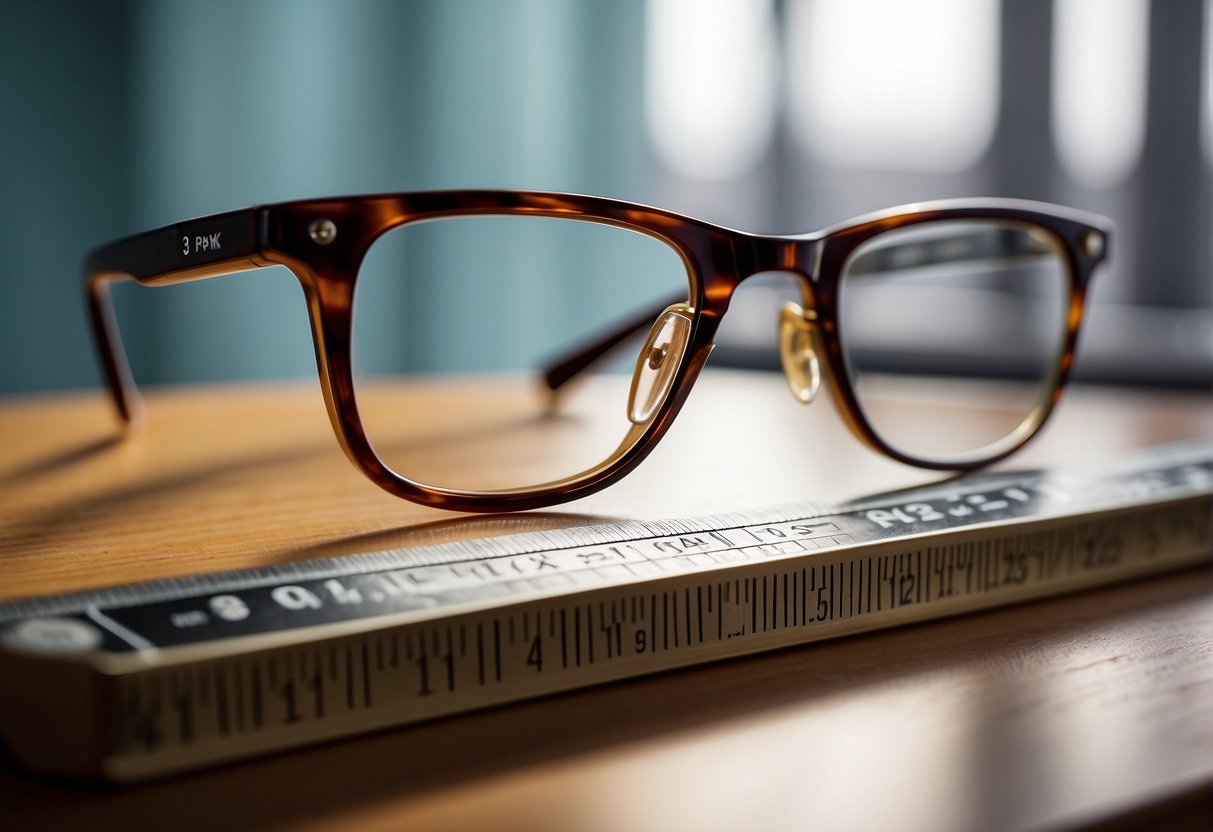
When we select a pair of glasses, knowing the precise measurements can ensure a comfortable and proper fit.
We'll need a millimeter ruler or a soft measuring tape to begin measuring our glasses accurately.
Measuring Frame Dimensions
To accurately measure the frame dimensions of our glasses, we start by measuring the horizontal width of one lens at its widest point.
It's best to use a ruler and note the measurement from the left to the right edge of the lens, typically in millimeters.
Next, we measure the vertical height of the lens from the top to the bottom of the lens frame. Write down the horizontal width and the vertical height, as these dimensions determine the lens size of the glasses.
Finding the Right Bridge Size
The bridge size is the distance between one lens and the other.
To find the right bridge size, we measure the gap above the nose piece between the lenses.
We position the ruler directly against the bridge and measure the space in millimeters.
Getting this dimension correct is crucial because a bridge that is too small can pinch our nose, while one that's too large can cause our glasses to slip.
Determining Temple Arm Length
To determine the temple arm length, we measure the arm of the glasses from the hinge—where the arm connects to the frame—all the way to the tip.
It's preferable to use a soft measuring tape for this step due to the curve in the temple arm.
The length of the temple arm is critical for comfort, as arms that are too short can pinch behind our ears and ones that are too long won't secure the glasses properly on our face.
We record this measurement in millimeters to find the suitable temple arm length for our glasses.
Selecting the Correct Frame Size
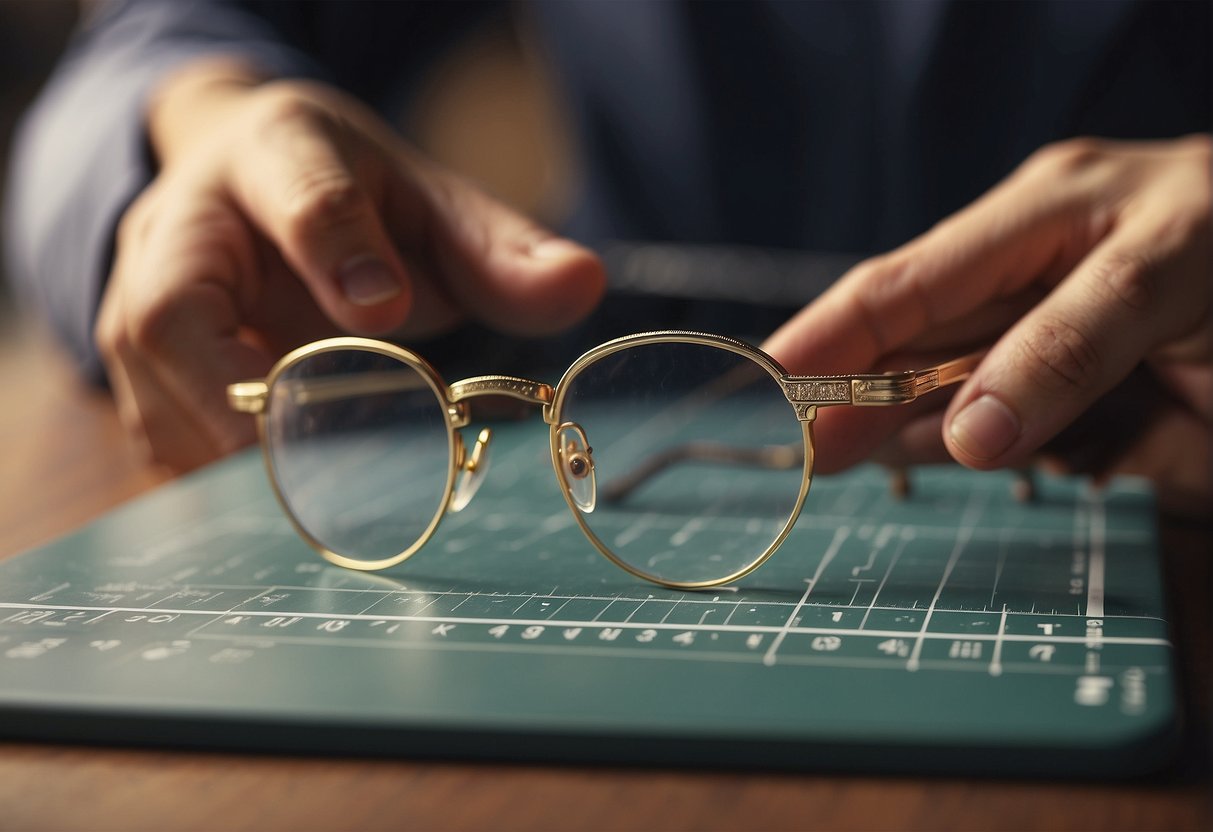
Selecting the correct frame size is crucial for both aesthetics and comfort.
It involves considering face shape and frame style, as well as making appropriate adjustments for a secure and snug fit.
Understanding Face Shape and Frame Style
Finding the perfect frame begins with the shape of your face. We categorize face shapes into several types: oval, round, square, heart, and diamond.
Each shape has its ideal frame style that balances the face's natural contours:
- Oval Faces: Most frame styles suit oval faces, but particularly those with a strong bridge.
- Round Faces: Square or rectangular frames add contrast, making the face appear longer and thinner.
- Square Faces: Round or oval glasses can soften the angularity of the face.
- Heart Faces: Frames that are wider at the bottom provide a counterbalance to the face shape.
- Diamond Faces: Top-heavy frames like semi-rimless or cat eyes accentuate the cheekbones.
The frame size is composed of the lens width, bridge size, and temple length. Glasses size should be in scale with your face size.
Adjustment for Comfort and Stability
A well-fitting pair of glasses rests comfortably on your nose and ears without pinching or sliding down.
The bridge size is pivotal for such stability, as it connects the lenses and determines how glasses fit your nose.
Here are aspects to consider for a comfortable fit:
- Bridge Size: The distance between the two lenses affects how the glasses rest on your nose. A proper fit means the glasses sit without pressure points.
- High Bridge: Individuals with a high bridge should look for a higher bridge size.
- Frame Arms: Ensure they're long enough to sit comfortably over your ears.
Frames that provide a perfect fit are those that align with the width of your face without extending beyond it, allow your eyes to be centered within the lenses, and do not pinch at the bridge or temples.
Types of Lenses and Their Measurements
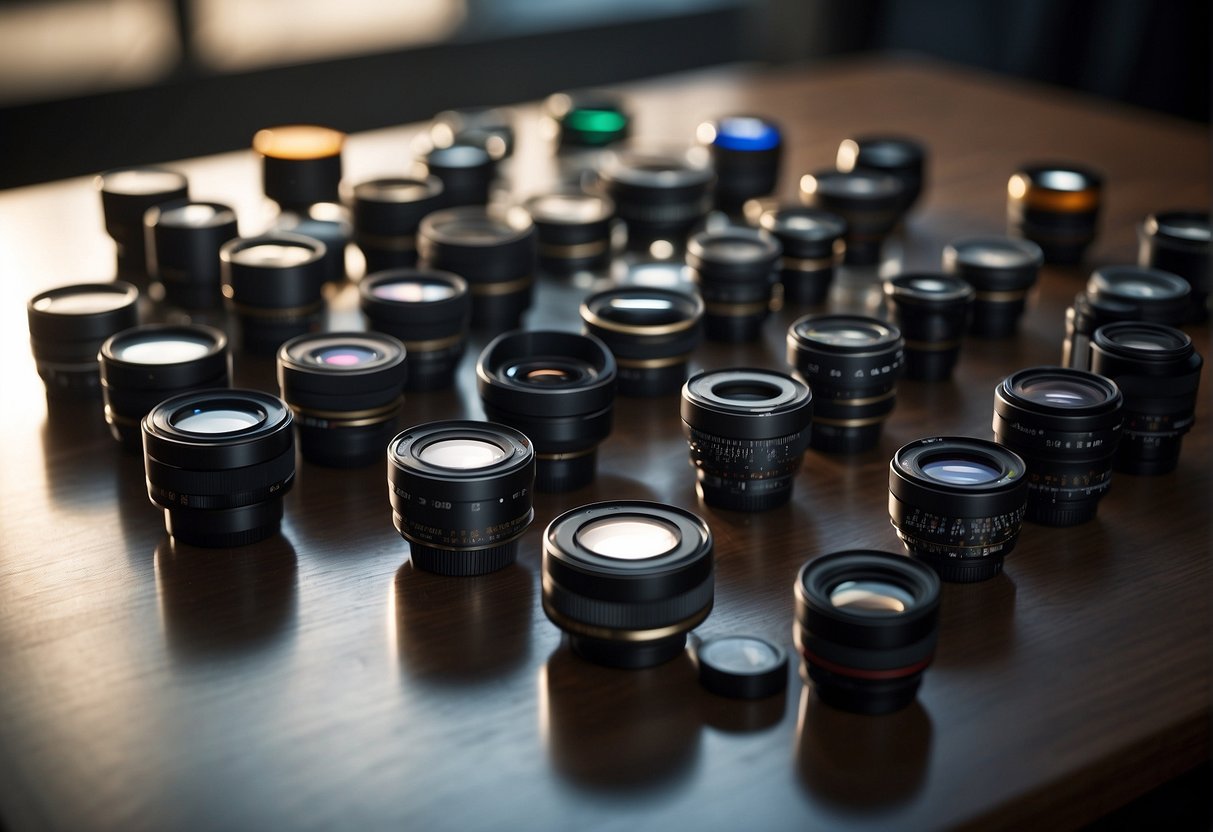
We will discuss the precise measurements critical to the functionality of various lens types, focusing on single vision, multifocal lenses, and the distinctions between bifocals and progressive lenses.
Single Vision and Multifocal Lenses
Single vision lenses are designed to correct one field of vision, either distance, intermediate, or near.
We measure these lenses by lens power, described in diopters, and pupillary distance (PD), which is the distance between the centers of the pupils in millimeters.
Multifocal lenses, on the other hand, incorporate multiple prescriptions into one lens, allowing the wearer to see clearly at various distances without changing glasses.
Key Measurements for Single Vision and Multifocal Lenses:
- Lens Power (Diopters): Exact power needed for vision correction
- Pupillary Distance (PD): Distance between pupils (usually ranges from 54mm to 74mm for adults)
Bifocals and Progressive Lenses
Bifocals contain two distinct optical powers to assist with both distance vision (top portion) and near vision (lower portion).
The lens height, or the distance from the bottom of the lens to the segment line demarcating the bifocal portion, is essential for proper alignment with the wearer's line of sight.
Progressive lenses offer a seamless graduation of lens power from the top (distance vision) to the bottom (near vision), eliminating the visible line found in bifocals.
Here, precise measurement of lens height is crucial as well, along with an accurate pupillary distance to ensure the smooth transition between lens powers.
Specific Measurements for Bifocals and Progressive Lenses:
- Lens Height: Must align with the user's line of sight
- Pupillary Distance (PD): Critical for the placement of the progressive corridor and the lens' sections
In fitting either type of lenses, the correct PD ensures that the lenses align correctly with the wearer's eyes, while lens height guarantees optimal performance of the bifocal or progressive segments.
Consulting With Eyewear Specialists
Engaging with eyewear specialists is crucial when searching for the perfect pair of glasses.
These experts possess a deep understanding of frame model specifications, measurements, and lens options for both prescription glasses and sunglasses.
When consulting with them, make sure to:
- Have your prescription ready.
- Know your model number if you're looking for a specific frame.
- Be prepared to discuss your lifestyle needs and aesthetic preferences.
Specialists will help you navigate the nuances of frame shapes, materials, and sizes to find the optimal fit for your face and vision needs.
Frequently Asked Questions
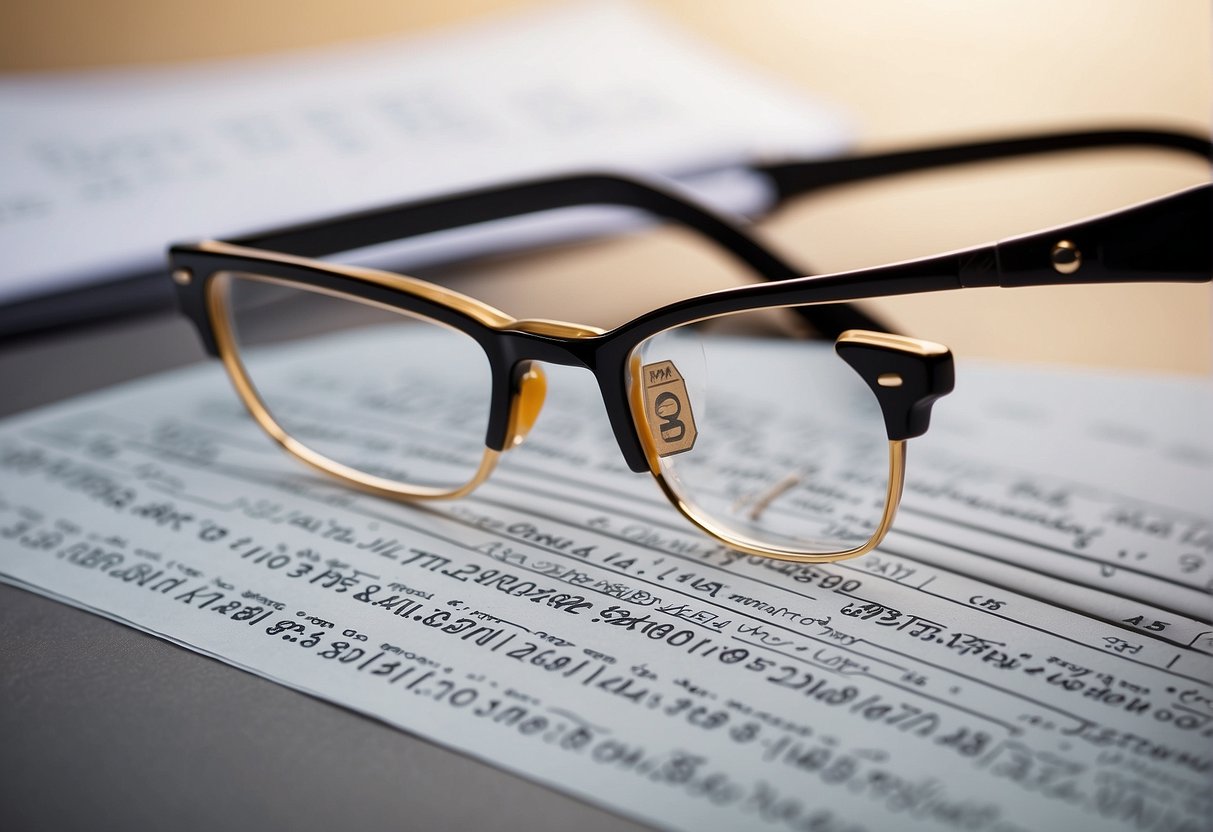
In this section, we answer common queries related to the sizing and measurements of eyeglasses to help you find the perfect fit.
How can I determine the correct lens size for my glasses?
To determine the correct lens size for your glasses, you can refer to a current pair that fits well. Lens size is usually noted in millimeters and represents the width of one lens.
What is the meaning of the numbers on my glasses frame?
The numbers on your glasses frame indicate specific sizes in millimeters: lens width, bridge width, and arm length, in that order. These measurements ensure a proper fit.
How do I accurately measure my face for glasses at home?
You can accurately measure your face for glasses at home using a millimeter ruler. Measure the width of your face from temple to temple to get a ballpark frame width suitable for you.
What do the three standard measurements on glasses indicate?
The three standard measurements on glasses include the lens width, bridge width, and temple arm length. These measurements are essential for a comfortable and well-aligned pair of glasses.
Is there a way to calculate glasses size based on age?
No, glasses size cannot be accurately calculated based on age alone due to the variation in individual facial features and growth patterns.
What constitutes an average glasses frame width?
The average glasses frame width ranges between 128 and 145 millimeters. However, the ideal width varies depending on the individual's face size.

